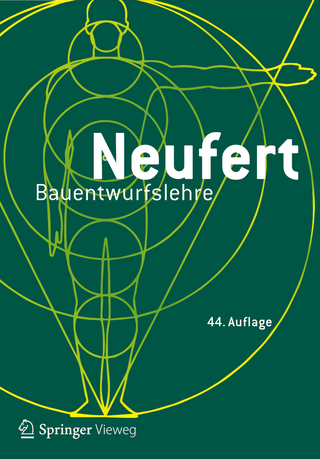
Towards Green Hydrogen Generation
Wiley-Scrivener (Verlag)
978-1-394-23408-0 (ISBN)
- Titel z.Zt. nicht lieferbar (ca. August 2025)
- Versandkostenfrei innerhalb Deutschlands
- Auch auf Rechnung
- Verfügbarkeit in der Filiale vor Ort prüfen
- Artikel merken
Energy sources and generation is the foremost concern of all governments, NGOs, and activist groups. With Green New Deals and reduced or net zero emission goals being implemented on a global scale, the quest for economic, scalable, efficient, and sustainable energy systems has reached a fever pitch. No one energy source ticks all the boxes and new energy technologies are being developed all the time as potential disruptors. Enter green hydrogen with zero emissions. Hydrogen is a rare gas in nature and is often found together with natural gas. While hydrogen is the most abundant element in the known universe, molecular hydrogen is very rare in nature and needs to be produced—and produced in large quantities, if we are serious about the Green Deal.
This book has been organized into three parts to introduce and discuss these crucial topics. Part I discusses the Green Deal and the current state and challenges encountered in the industrialization of green hydrogen production, as well as related politics. Chapters in this section include how to decarbonize the energy industry with green hydrogen, and one that describes a gradual shift in the approach of hydrogen production technologies from non-renewable to renewable. Part II is devoted to carbon capturing and hydrogen. Chapters on biomass mass waste-to-hydrogen conversion and related efficient and sustainable hydrogen storage pathways, life cycle assessment for eco-design of biohydrogen factory by microalgae, and metal oxide-based carbon capture technologies are all addressed in this section. The third and final part of the book was designed to present all features of green hydrogen generation. Chapters include PEM water electrolysis and other electrolyzers, wind-driven hydrogen production, and bifunctional electrocatalysts-driven hybrid water splitting, are introduced and thoroughly discussed.
Audience
This book is directed to researchers and industry professionals in energy engineering, chemistry, physics, materials science, and chemical engineering, as well as energy policymakers, energy economists, and others in the social sciences.
Mehmet Sankir, PhD, received his doctorate in macromolecular science and engineering from the Virginia Polytechnic and State University, USA, in 2005. Dr. Sankir is a full professor in the Department of Materials Science and Nanotechnology Engineering, TOBB University of Economics and Technology, Ankara, Turkey, and group leader of the Advanced Membrane Technologies Laboratory. He has carried out research and consulting activities in the areas of membranes for fuel cells, flow batteries, hydrogen generation, and desalination. He has organized special sessions for engineering conferences. This is his seventh co-edited book with the Wiley-Scrivener imprint. Nurdan Demirci Sankir, PhD, is a full professor in the Materials Science and Nanotechnology Engineering Department at the TOBB University of Economics and Technology (TOBB ETU), Ankara, Turkey. She received her doctorate degree in materials science and engineering from the Virginia Polytechnic and State University, USA, in 2005. After graduation, she joined NanoSonic Inc. in Virginia, USA as an R&D engineer and program manager. In 2007, she enrolled at TOBB ETU, where she has been a faculty member since then. She established the Energy Research and Solar Cell Laboratories at TOBB ETU. Nurdan has actively carried out research and consulting activities in the areas of photovoltaic devices, solution-based thin-film manufacturing, solar-driven water splitting, photocatalytic degradation, and nanostructured semiconductors. This is her seventh co-edited book with the Wiley-Scrivener imprint.
Preface xiii
Part 1: Hydrogen and the Green Deal 1
1 Decarbonizing the Industry with Green Hydrogen 3
Cigdem Tuc Altaf, Orcun Demir, Tuluhan Olcayto Colak, Emine Karagöz, Mehmet Kurt, Nurdan Demirci Sankir and Mehmet Sankir
1.1 Introduction 4
1.2 Intersections of National H2 Strategies 6
1.3 Decarbonization of Carbon-Intensive Sectors 9
1.4 Developments in Industrial Use of Green H2 19
1.5 Conclusions 35
2 Conventional to Renewable Hydrogen Production: A Paradigm Shift Toward Sustainable Energy 49
Kriti Shrivasava and Ankur Jain
2.1 Introduction 50
2.2 Hydrogen Production Technologies 52
2.3 Production of Blue Hydrogen 54
3 Toward Green Hydrogen Generation 87
Kexin Yin, Yinglong Wang, Xiaoying Zhang, Yusen Chen and Jianhui Zhong
3.1 Introduction 88
3.2 Traditional Hydrogen Production Technology 91
3.3 Green Hydrogen Production Technology 95
3.4 Challenges Facing the Industrialization of Green Hydrogen Production 112
3.5 Conclusion 114
Part 2: Carbon Capturing and Hydrogen 121
4 Biomass Waste-to-Hydrogen Conversion: Innovations in Methanol and Ammonia Production as Efficient and Sustainable Hydrogen Storage Pathways 123
Arif Darmawan, Abdul Hadi, Abdul Hamid Budiman, Eniya Listiani Dewi and Muhammad Aziz
4.1 Introduction 124
4.2 Hydrogen Production from Thermochemical Conversion and Methanol/Ammonia as Potential Hydrogen Carriers 126
4.3 Enhancing Efficiency through Process Modeling and Exergy Optimization 129
4.4 Municipal Solid Waste Conversion to Hydrogen and Methanol for Efficient Energy Storage 136
4.5 Innovations in Direct Ammonia Production from Biomass Waste through Carbonization and Thermochemical Cycles 138
4.6 Exergoeconomic Analysis, Combining Techno-Economic Analysis, and Exergy Analysis 141
4.7 Conclusion 144
5 Advances and Challenges in Metal Oxide--Based Carbon Capture Technologies: An Overview 149
Berfu Kocabas, Olgu C. Cosar, Arpad Mihai Rostas, Ipek Deniz Yildirim, Ahmet Gungor and Emre Erdem
5.1 Introduction 149
5.2 Metal Oxides as Carbon Capture Agents 152
5.3 Enhancing Carbon Capture Efficiency 154
5.4 Future Trends and Research Directions 165
5.5 Conclusion 166
6 Coupling of Process Intensification to Life Cycle Assessment for Eco-Design of Biohydrogen Factory by Microalgae 171
Iván Ehecatl López-González, Pablo Antonio López-Pérez and Dulce Jazmín Hernández-Melchor
6.1 Introduction 172
6.2 Methodology 181
6.3 Numerical Experiments 187
6.4 Conclusion 193
7 In Situ Monitoring for Biohydrogen Production Using a Low-Cost Sensor 205
Pablo Antonio López Pérez, Patricia Meneses Martínez, Emmanuel Vallejo Castañeda and Ricardo Aguilar López
7.1 Introduction 206
7.2 Methodology 219
7.3 Results 225
7.4 Conclusions 231
Part 3: Green Hydrogen Generation 237
8 Green Hydrogen Production by PEM Water Electrolysis 239
Sergey A. Grigoriev
9 Wind Driven Hydrogen Production in Eastern Morocco: Suitability Atlas Development and Techno-Economic Analysis 267
Salaheddine Amrani, Samir Touili, Abdellatif Azzaoui, Ahmed Alami Merrouni and Hassane Dekhissi
9.1 Introduction 268
9.2 Materials and Methods 269
9.3 Results and Discussion 282
9.4 Conclusion 288
10 Bifunctional Electrocatalyst--Driven Hybrid Water Splitting for Energy-Saving Coproduction of Green H2 and ValuableChemicals 293
Hui Jiang, Guoliang Mei and Bo You
10.1 Introduction 294
10.2 Fundamentals of Hybrid Water Splitting 296
10.3 Electrochemical Reconstruction 303
10.4 Hybrid Water Splitting with Oxidative Upgrading 306
10.5 Conclusions and Outlook 334
11 Electrolyzers for H2 Production: A Review 359
Edisson Villa-Ávila, Paul Arévalo, Marcos Tostado-Véliz and Francisco Jurado
11.1 Introduction 360
11.2 Materials and Methods 362
11.3 Advances in Electrolyzer Technology 371
11.4 Future Perspectives and Trends 377
11.5 Current Challenges and Obstacles 382
11.6 Applications and Industrial Potential 383
11.7 Case Studies 385
11.8 Economic and Sustainability Considerations 387
11.9 Conclusions and Recommendations 394
12 Green Hydrogen Generation by Water Electrolysis 407
Weizhe Zhang, Yixiang Shi, Shuang Li and Ningsheng Cai
12.1 Introduction 408
12.2 Fundamentals of Water Electrolysis 408
12.3 Alkaline Electrolysis Cell (AEC) 414
12.4 Polymer Electrolyte Membrane Electrolysis Cell (PEMEC) 422
12.5 Protonic Ceramic Electrolysis Cell (PCEC) 429
12.6 Solid Oxide Electrolysis Cell (SOEC) 435
12.7 Summary 440
References 441
Index 463
| Erscheint lt. Verlag | 19.8.2025 |
|---|---|
| Reihe/Serie | Advances in Hydrogen Production and Storage (AHPS) |
| Sprache | englisch |
| Themenwelt | Technik ► Architektur |
| Technik ► Elektrotechnik / Energietechnik | |
| ISBN-10 | 1-394-23408-2 / 1394234082 |
| ISBN-13 | 978-1-394-23408-0 / 9781394234080 |
| Zustand | Neuware |
| Informationen gemäß Produktsicherheitsverordnung (GPSR) | |
| Haben Sie eine Frage zum Produkt? |
aus dem Bereich


